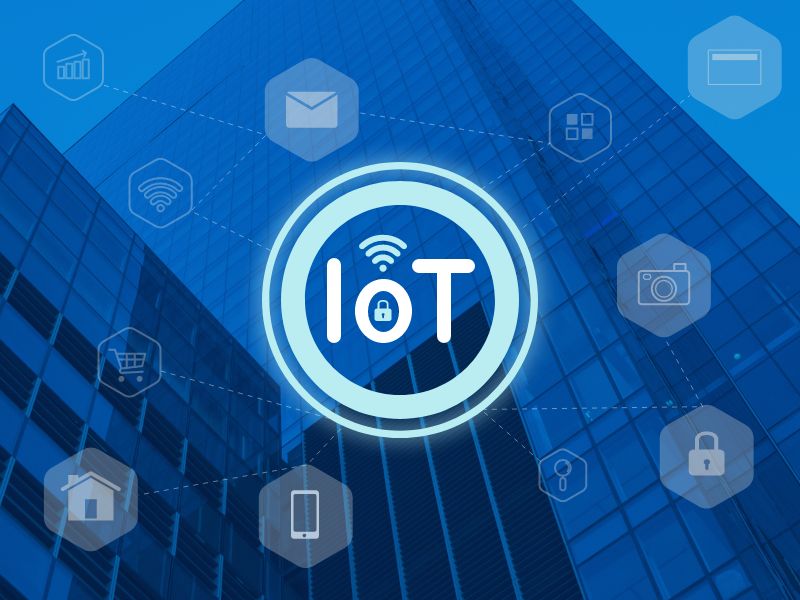Exploring the Key Elements of IoT in Facility Management

What happens if a facility can reduce energy costs, optimize workplace capacity and utilization, anticipate possible breakdowns, provide quicker resolutions for service requests, and improve employee and user experience?
Probably you said- that would be transformative!
That’s what IoT is doing in the facility management industry.
Many industries and companies are already benefiting from this revolutionary technology of the Internet of Things, becoming more efficient in their operations. Forbes predicts that utilizing IoT-based innovations in smart facilities will generate a value of $500 billion.
Integrating facility management software with IoT devices allows businesses to gain real-time insights into energy consumption, space utilization, equipment health, and service needs.
Understanding the role of IoT in facility management is crucial to unlocking its full potential. In this blog, we will discuss the essential IoT components that impact and helps to manage facilities.
What Are the Key Elements of IoT?
The basic IoT elements for facility management can be leveraged to achieve many benefits in building operations.
Sensors and Devices
Smart sensors act as the foundation of IoT devices for facilities management. They collect data on various aspects of a building. IoT devices use this data to make intelligent decisions and control multiple facets of the property. It also promotes predictive analytics and alerts managers to risky circumstances.
Central Control Hardware
It acts like a central hub that collects and processes data from various sensors and devices throughout a building. This hardware can range from on-premises servers to cloud-based platforms and enables managers to monitor and manage all aspects of an IoT building management operation in real-time.
Data connectivity
Data connectivity allows various sensors and devices to communicate with each other and central control hardware. This connectivity can be achieved through multiple technologies like Wi-Fi, Bluetooth, and cellular networks. Robust data connectivity also allows for remote monitoring and control of devices, allowing managers to manage their facilities from anywhere.
Data Processing
It involves collecting data, analyzing, and interpreting data generated by sensors and devices throughout a premise. This data can include energy usage, occupancy levels, environmental conditions, and more information. Advanced data processing techniques like machine learning and artificial intelligence can also enable predictive maintenance and automated decision-making.
Cloud Computing
The cloud provides a scalable and secure platform for storing and processing large volumes of data. IoT in facilities management facilitates the safe storage, retrieval, and analysis of data from any location with an internet connection. It provides the flexibility to manage and monitor various aspects of the facilities, which are vital to a facility’s economic and social well-being.
User Interface
The user interface is the interface between the manager and the IoT device. It provides a dashboard that displays real-time data and insights about performance and anomalies to the manager. The user interface should be intuitive and easy to use, enabling the manager to make quick decisions.
Data Analytics
Data analytics in IoT for facility management is used for predictive maintenance, energy management, and space utilization. It enables managers to make data-driven decisions in real-time. According to a press release from Gartner, data analytics in IoT technology can lower energy costs, spatial management expenses, and building maintenance expenses by up to 30%.
Security and access control
Security and access control can be achieved through physical access, video surveillance, and cybersecurity. They ensure that only authorized personnel enter and maintain a safe workplace for employees and visitors. For example, managers can use access control devices such as key cards or biometric scanners to restrict access to sensitive areas of a property, ensuring only authorized personnel can enter.
Standards and Protocols
Standards and protocols are critical to ensuring interoperability and compatibility between IoT devices. Industry standards like MQTT, CoAP, and OPC-UA enable integration between IoT devices. It ensures that devices from different manufacturers can communicate with each other, allowing managers to integrate various methods and devices seamlessly.
Conclusion
IoT in facility management acts as a game changer, and its essential elements are crucial for successful building management operations. These elements work together to create a robust IoT ecosystem for building management. Each component is equally important and needs to be in a perfect state for the smooth functioning of IoT to manage facilities.
The availability of real-time data, predictive maintenance, reduced energy consumption, and increased safety are some of the key benefits of IoT that managers can leverage with its deployment. Therefore, managers should embrace IoT technology and ensure that all the elements are in place to implement this innovative technology successfully.


